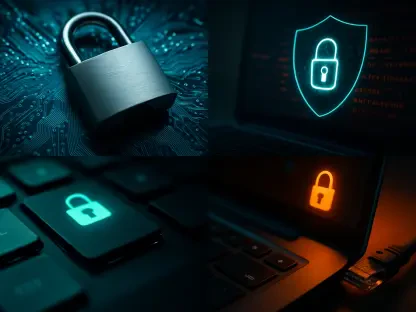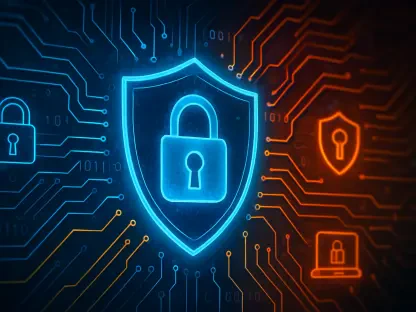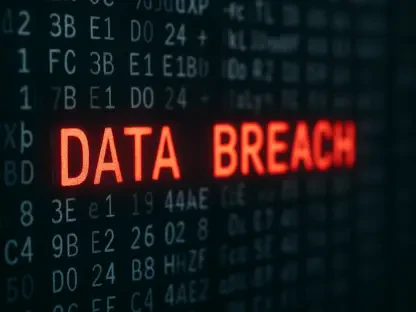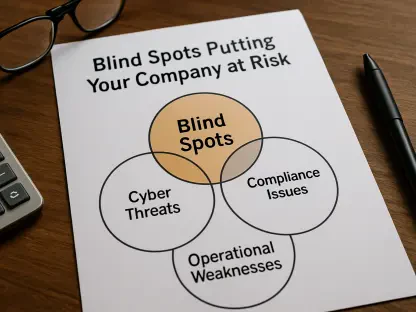Imagine a world where every private conversation, every sensitive business deal, and every personal message could be intercepted without your knowledge, leaving you vulnerable to unseen threats. In an era of escalating cyber threats and data breaches, end-to-end encryption (E2EE) stands as a digital fortress, ensuring that only the intended sender and recipient can access the content of their communications. This technology has become a cornerstone of online privacy, yet it finds itself at the heart of a fierce global debate. Governments argue it shields criminal activity, while privacy advocates champion it as a fundamental right. This review delves into the intricacies of E2EE, exploring its technical prowess, real-world applications, and the contentious balance between safeguarding privacy and ensuring national security.
Technical Breakdown of End-to-End Encryption
Core Mechanisms and Security Features
End-to-end encryption operates on a simple yet powerful principle: data is encrypted on the sender’s device and can only be decrypted by the recipient’s device. This process relies on cryptographic keys—unique codes that lock and unlock the data—ensuring that no intermediary, not even the service provider, can access the content during transmission. The technology’s design prevents unauthorized access, making it a robust shield against hackers and surveillance attempts in an increasingly connected digital landscape.
Beyond its basic function, E2EE employs advanced algorithms to maintain security even under sophisticated attacks. By decentralizing access to decryption keys, it minimizes the risk of centralized data breaches, a common vulnerability in other systems. This feature has made E2EE a preferred choice for secure communication platforms, setting a high standard for data protection across various applications.
Limitations and Potential Weaknesses
Despite its strengths, E2EE is not without flaws. One significant limitation is that it renders content invisible to service providers, preventing them from monitoring for illegal or harmful activities. While this protects user privacy, it also means that malicious content can potentially go undetected, creating a blind spot for oversight mechanisms.
Additionally, the technology’s security hinges on the integrity of the user’s device. If a device is compromised before encryption or after decryption, the data becomes vulnerable, bypassing E2EE’s protective layer. This endpoint vulnerability underscores that while the technology is formidable during transmission, it cannot account for external breaches at the user level.
Real-World Performance and Applications
Deployment in Everyday Tools
End-to-end encryption has become integral to many widely used platforms, ensuring secure communication for millions globally. Applications like WhatsApp, Signal, and Apple’s iMessage have integrated E2EE to protect user messages, making private conversations safe from prying eyes. This widespread adoption highlights the technology’s reliability in handling vast volumes of sensitive data daily.
The impact of E2EE extends beyond personal use, playing a critical role in high-stakes environments. Journalists, activists, and businesses in regions with heightened surveillance risks rely on this technology to safeguard their communications. For these groups, E2EE is not just a feature but a lifeline that enables them to operate without fear of interception or retaliation.
Influence on Trust and Industry Standards
By embedding E2EE, digital services have fostered greater trust among users, establishing a benchmark for privacy in the tech industry. Companies that prioritize this technology often gain a competitive edge, as consumers increasingly value security in their digital interactions. This trend reflects a broader shift toward privacy-conscious design in software development.
However, the implementation of E2EE is not always uniform, as seen in specific cases where companies adjust features due to regional policies. For instance, Apple limited its Advanced Data Protection options for certain users in response to governmental pressures, illustrating how external factors can influence the technology’s application and effectiveness in different markets.
Challenges and Controversies
Balancing Privacy with Security Needs
The primary contention surrounding E2EE lies in its perceived obstruction of national security efforts. Governments, particularly in regions like the UK, argue that the technology hampers law enforcement’s ability to combat serious crimes such as terrorism and child exploitation. This perspective fuels ongoing demands for access mechanisms, often clashing with the core purpose of encryption.
On the other side, privacy advocates emphasize that E2EE is essential for protecting individuals from overreach and abuse. The debate reveals a deep divide, where security concerns are pitted against the right to private communication, leaving little room for compromise without undermining the technology’s fundamental principles.
Technical and Ethical Dilemmas
Creating access points or backdoors for authorities poses significant technical challenges, as any such mechanism could be exploited by malicious entities. Cybersecurity experts widely agree that a secure backdoor is an oxymoron, as it inherently weakens the system for all users. This reality complicates governmental proposals and raises questions about feasibility.
Ethically, the push to bypass E2EE risks aligning with intrusive surveillance practices seen in less democratic regimes, prompting concerns about human rights violations. Legal experts caution that such moves could conflict with international standards, potentially straining diplomatic relations and affecting global data-sharing frameworks.
Global Dynamics and Policy Implications
Governmental Pushback and Proposals
In certain jurisdictions, there has been a consistent effort to weaken or circumvent E2EE through legislation and policy. Over recent years, proposals like client-side scanning—where content is analyzed on a device before encryption—have emerged as potential workarounds. However, these ideas face criticism for undermining the very privacy that E2EE seeks to protect.
International opposition adds another layer of complexity to these efforts. Significant resistance from major allies, particularly the United States, highlights concerns over privacy violations and the impact on tech industries. This global pushback suggests that unilateral moves to alter encryption standards may face substantial hurdles in implementation.
Industry and Public Response
The tech industry remains a staunch defender of E2EE, viewing it as a non-negotiable aspect of user security. Companies argue that altering the technology to accommodate governmental access would erode consumer confidence and expose users to greater risks. This stance often puts them at odds with regulatory bodies seeking greater control.
Public sentiment, shaped by increasing awareness of data privacy issues, largely supports maintaining strong encryption. Resistance to government intervention continues to grow, driven by advocacy groups and informed citizens who see E2EE as a critical safeguard in the digital age, further complicating policy discussions.
Final Thoughts and Path Forward
Looking back, this exploration of end-to-end encryption revealed a technology that excelled in securing digital communications while grappling with intense scrutiny and complex challenges. Its technical foundation proved robust in protecting privacy, yet the persistent tension between individual rights and collective safety remained unresolved. The global debate, marked by governmental pressures and industry resistance, underscored the difficulty of finding a balanced solution.
Moving ahead, stakeholders must prioritize collaborative approaches to address security concerns without compromising encryption’s integrity. Exploring alternative solutions, such as enhanced metadata analysis or government-backed digital identification systems, could offer viable paths to monitor threats while preserving user privacy. International dialogue and potential treaties should be pursued to establish unified standards, ensuring that E2EE continues to serve as a pillar of trust in the digital realm while adapting to evolving societal needs.









